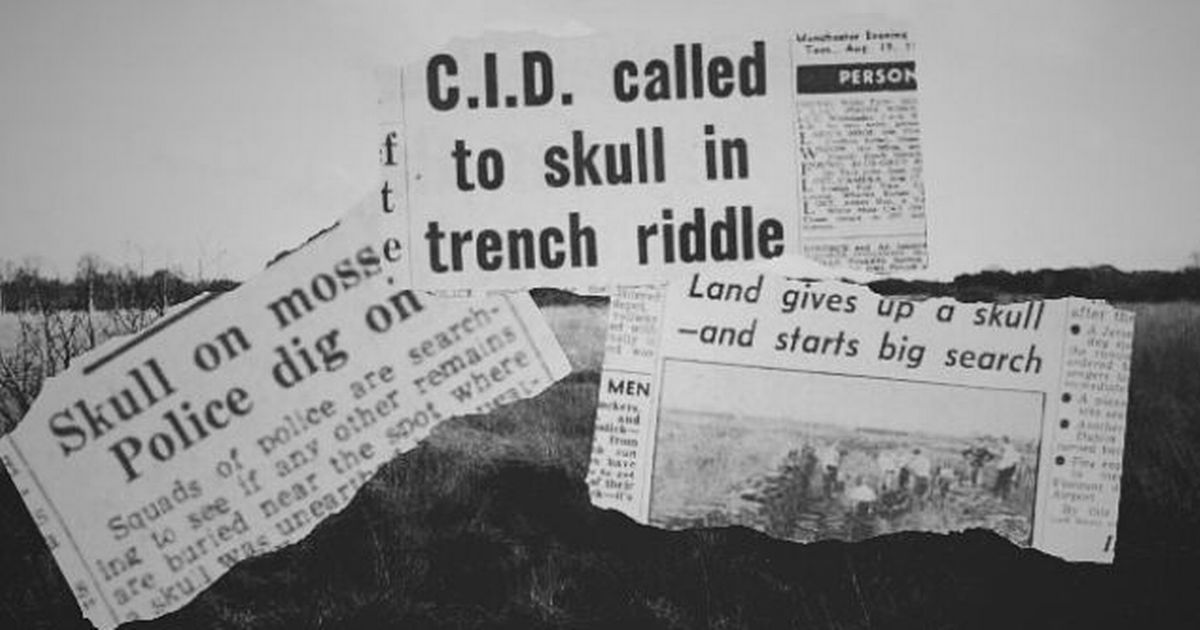On a summer day in 1958, a walker stumbled upon a human skull in Salford. While exploring a peat bog, he noticed what he thought was a piece of bone with ‘teeth attached’, eventually unearthing a skull along with decomposing flesh.
This shocking find, made 66 years ago, triggered a murder investigation. Local authorities were notified, leading to an extensive five-day search of 250 acres by police and forensic teams, but no additional remains were found.
The discovery sparked rampant speculation in the community, with local gossip circulating about ‘skeletons and murder’ in nearby villages.
Though the skull showed signs of decay, preserved hair and tissue initially led investigators to believe it was linked to a recent death.
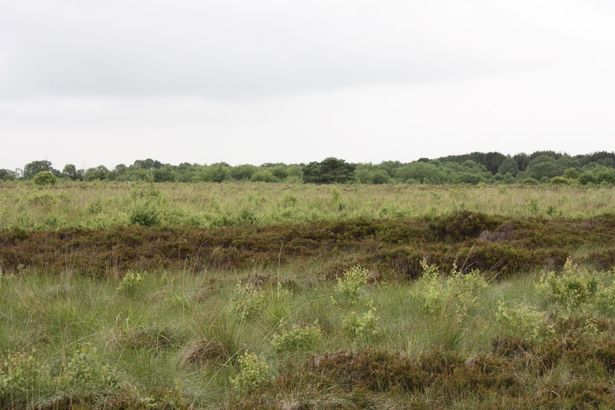 The head was discovered at Chat Moss (Image: MEN UGC)
The head was discovered at Chat Moss (Image: MEN UGC) The true story behind the skull remained largely a mystery for years, until archaeologists conducted further analyses that finally revealed the harrowing truth.
The Manchester Evening News gained access to historical publications by Research Explorer Melanie Giles from the University of Manchester, along with old newspaper clippings.
An article from the Manchester Evening News, dated August 19, 1958, bore the headline: “C.I.D called to skull in trench riddle”. It reported that police had investigated the peat area, searching for ‘other remains of a body’.
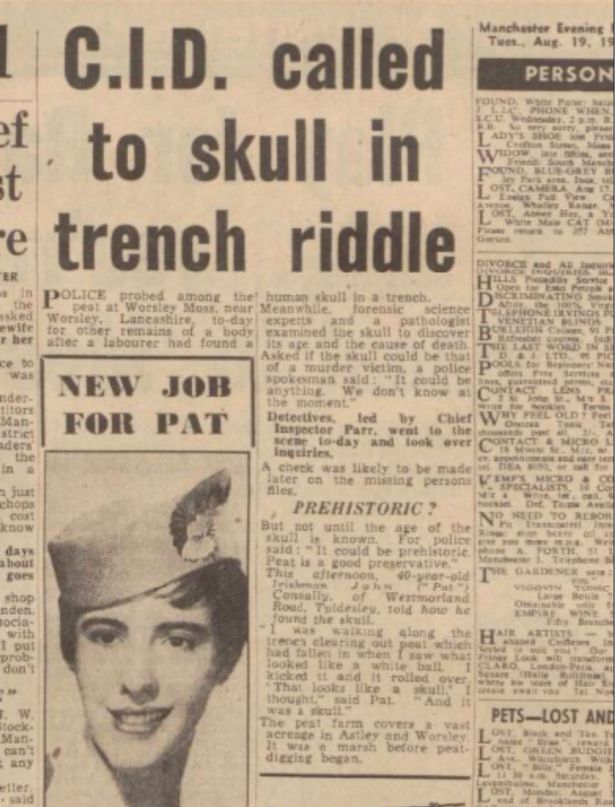 The M.E.N story at the time (Image: British Newspaper Archive)
The M.E.N story at the time (Image: British Newspaper Archive) During the investigation, authorities did not rule out murder. A police spokesperson remarked, “It could be anything. We don’t know yet,” as they cross-referenced missing persons reports to identify the remains.
John Connally, who discovered the remains, recounted, “I was walking along the trench clearing out peat that had fallen in when I saw what looked like a white ball. I kicked it and it rolled over. I thought, ‘that looks like a skull,’ and it was a skull.”
The remains were initially examined at Liverpool University and were quickly identified as belonging to an Asian man between the ages of 24 and 40. Initial assessments suggested the remains had been in the bog for ‘less than a year’.
Reports from the time indicate that Bolton Home Office pathologist Dr. G. Manning presented his findings to a coroner’s inquest in Preston. He recovered a portion of the skull, parts of the jaw, hair, skin, and even preserved brain matter from inside the skull.
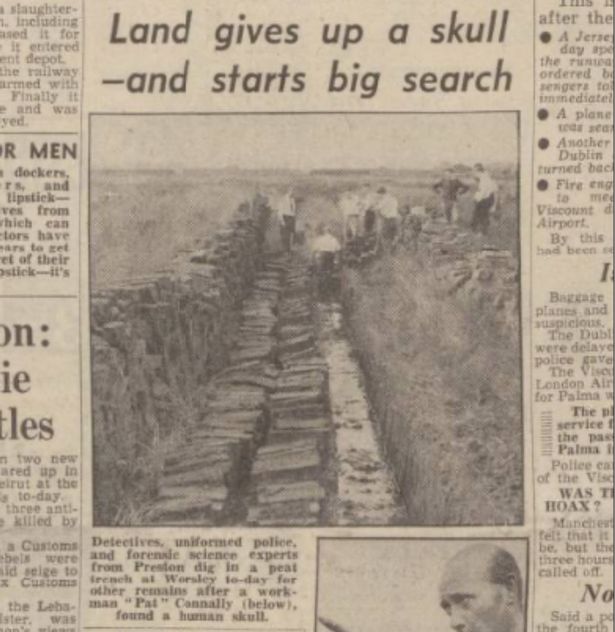 Pictures of the search mission were published in the newspaper (Image: British Newspaper Archive)
Pictures of the search mission were published in the newspaper (Image: British Newspaper Archive) Dr. Manning noted that the remains included ‘a portion of skull, an upper and lower jaw, the first two and a half cervical vertebrae, some skin above the right ear, a two-inch section below the right ear, a one-inch strip of skin on the right side of the neck, and a separate tooth.’
Over the following days, the Manchester Evening News published images showing extensive excavation efforts by forensic experts and detectives at Chat Moss in search of additional remains.
Chat Moss is a significant area of peat bog spanning parts of the City of Salford, the Metropolitan Borough of Wigan, and Trafford, adjacent to Worsley, Astley, and Glazebury.
At the time, Dr. Manning described peat as an ‘extraordinarily good preserver’, with bodies as old as 2,000 years found in remarkably well-preserved conditions. Later estimates placed the skull’s age between 100 and 500 years, indicating it was not a recent murder victim.
With no clear cause of death identified, the coroner issued an open verdict. After tests confirmed the skull was not recent, the remains, later nicknamed ‘The Worsley Man’, were transferred to the University of Manchester to be preserved as a historical artifact in the Museum of the Pathology Department. Conservation efforts, including wire staples, were utilized to maintain the skull’s condition.
Years later, the Worsley Man attracted renewed archaeological interest, especially after the discovery of the Lindow Man, whose remains were unearthed in a peat bog at Lindow Moss near Wilmslow on August 1, 1984.
This find was heralded as ‘one of the most significant archaeological discoveries of the 1980s’, garnering widespread media attention and sparking further research into bog bodies.
Injuries found on the Lindow Man suggested a violent demise, including a laceration at the back of the head, ligature marks on the neck, a head wound, broken neck, and fractured ribs, indicating a likely violent death.
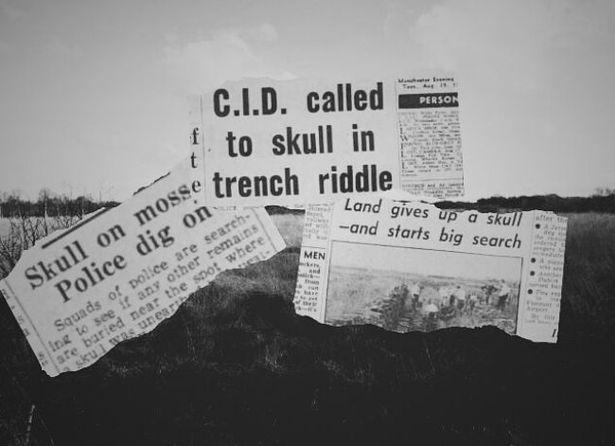 The gruesome discovery was made in a peat bog near Worsley 66 years ago – and made headline news (Image: Alan Wright / British Newspaper Archive)
The gruesome discovery was made in a peat bog near Worsley 66 years ago – and made headline news (Image: Alan Wright / British Newspaper Archive) Similarly, the Worsley Man’s remains exhibited signs of violent death, with injuries including a wound behind the right ear, a fracture on the top of the skull, a garrote around the neck, and a severed vertebra suggesting decapitation.
Four major investigations into the W
